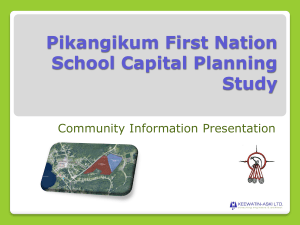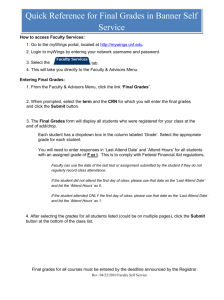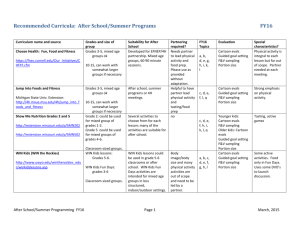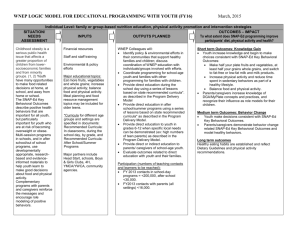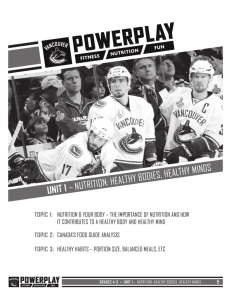In School--Program Delivery Model
advertisement
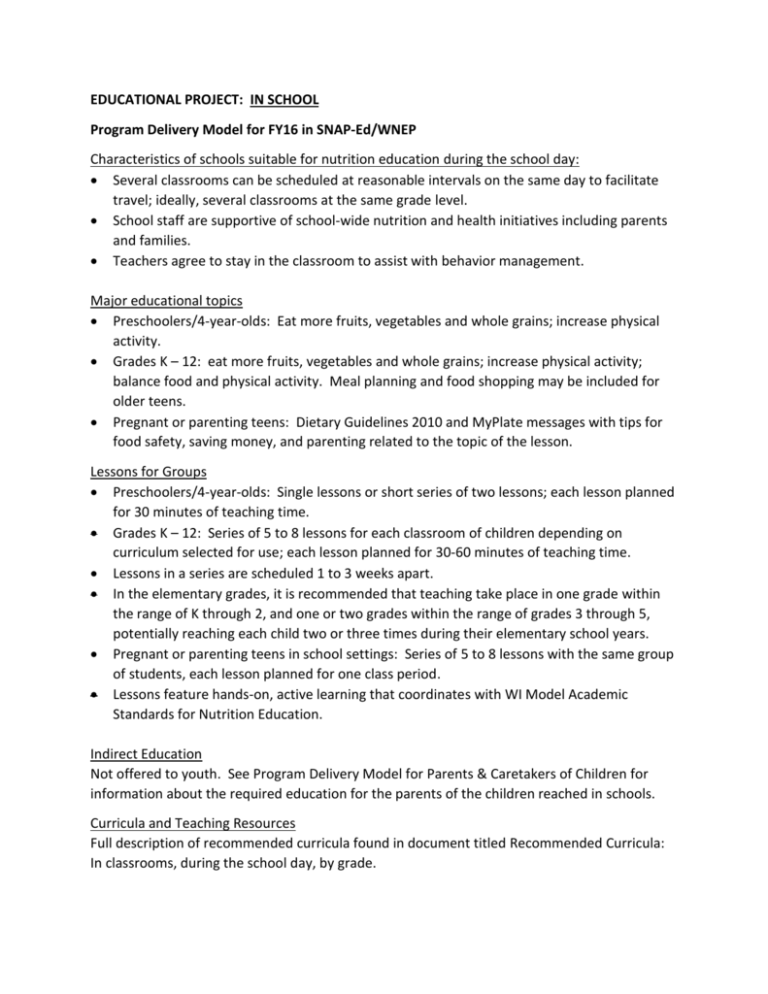
EDUCATIONAL PROJECT: IN SCHOOL Program Delivery Model for FY16 in SNAP-Ed/WNEP Characteristics of schools suitable for nutrition education during the school day: Several classrooms can be scheduled at reasonable intervals on the same day to facilitate travel; ideally, several classrooms at the same grade level. School staff are supportive of school-wide nutrition and health initiatives including parents and families. Teachers agree to stay in the classroom to assist with behavior management. Major educational topics Preschoolers/4-year-olds: Eat more fruits, vegetables and whole grains; increase physical activity. Grades K – 12: eat more fruits, vegetables and whole grains; increase physical activity; balance food and physical activity. Meal planning and food shopping may be included for older teens. Pregnant or parenting teens: Dietary Guidelines 2010 and MyPlate messages with tips for food safety, saving money, and parenting related to the topic of the lesson. Lessons for Groups Preschoolers/4-year-olds: Single lessons or short series of two lessons; each lesson planned for 30 minutes of teaching time. Grades K – 12: Series of 5 to 8 lessons for each classroom of children depending on curriculum selected for use; each lesson planned for 30-60 minutes of teaching time. Lessons in a series are scheduled 1 to 3 weeks apart. In the elementary grades, it is recommended that teaching take place in one grade within the range of K through 2, and one or two grades within the range of grades 3 through 5, potentially reaching each child two or three times during their elementary school years. Pregnant or parenting teens in school settings: Series of 5 to 8 lessons with the same group of students, each lesson planned for one class period. Lessons feature hands-on, active learning that coordinates with WI Model Academic Standards for Nutrition Education. Indirect Education Not offered to youth. See Program Delivery Model for Parents & Caretakers of Children for information about the required education for the parents of the children reached in schools. Curricula and Teaching Resources Full description of recommended curricula found in document titled Recommended Curricula: In classrooms, during the school day, by grade. Evaluation Statewide evaluation tools are available for elementary school youth. More tools and strategies will be developed as time and resources are available. Multi-level, collaborative efforts Work with schools, community partners and organizations to organize efforts, integrate services and create awareness around increasing participation in school meals. This may include: Coordinate with Food Service Directors to promote new foods or menu items within planned nutrition education activities. Provide outreach to families, direct and indirect education for parents. Collaborate with other programs or agencies, such as Farm to School. Participate in school wellness policy development and implementation. Participate in statewide efforts related to child obesity prevention in schools. Promote school and/or community participation in child meal programs such as school breakfast program, summer food service program, child and adult care food program, and the community eligibility provision. In School Program Delivery Model FY16 page 2
